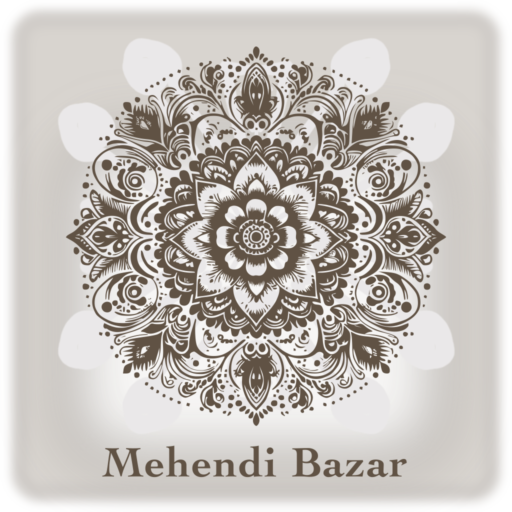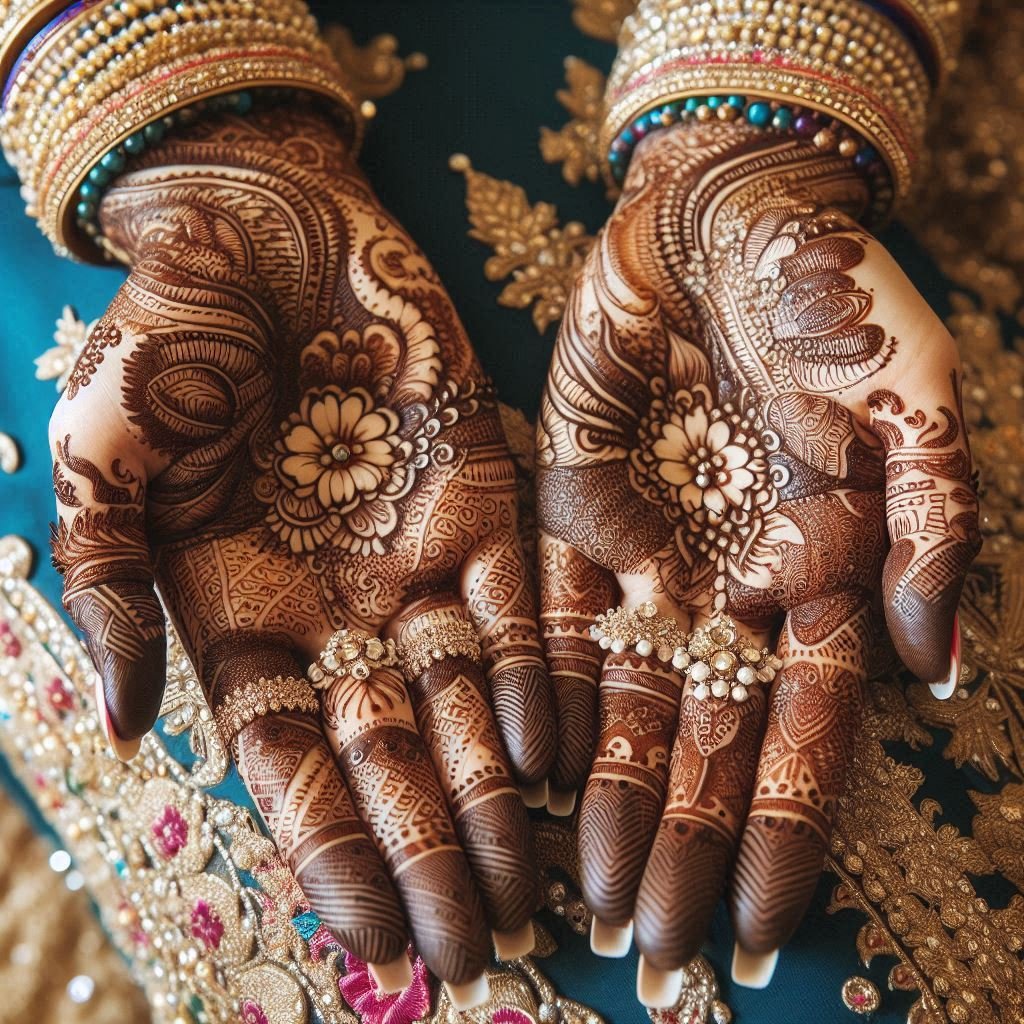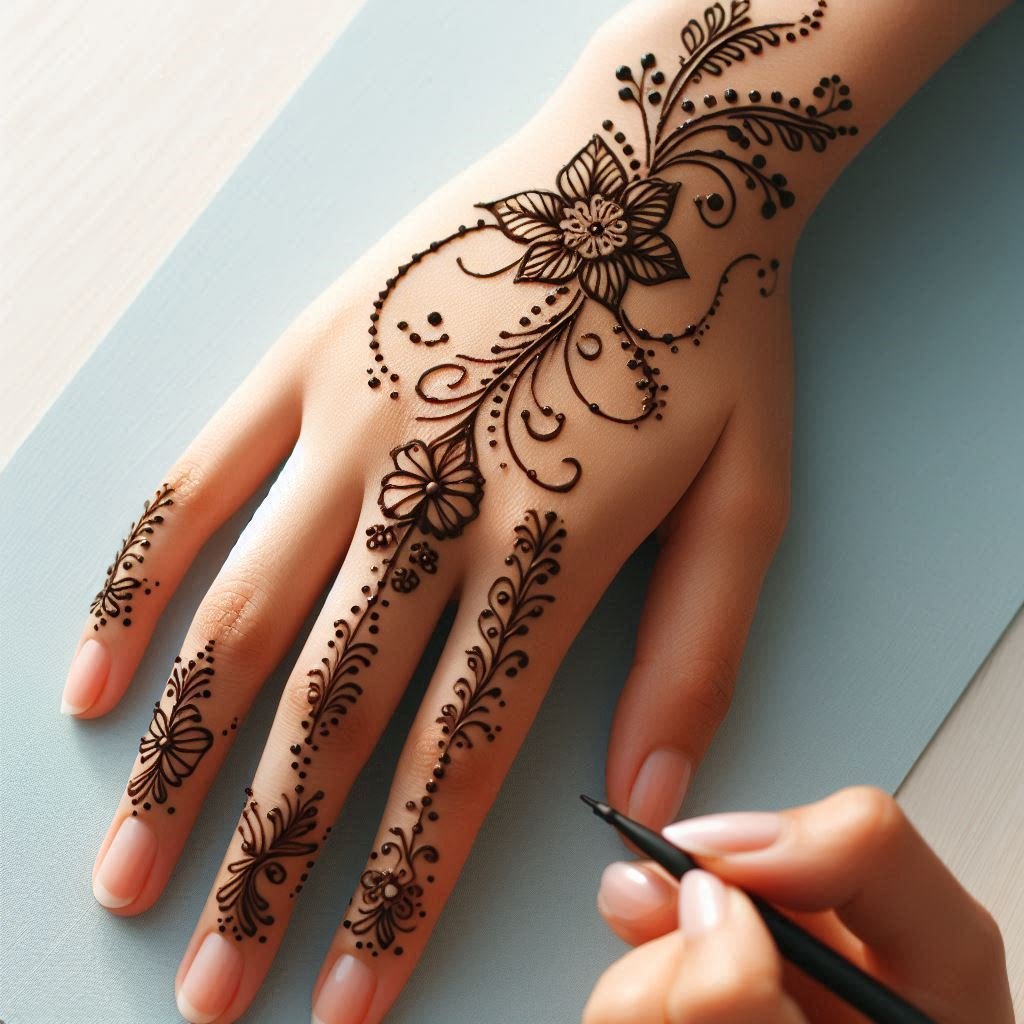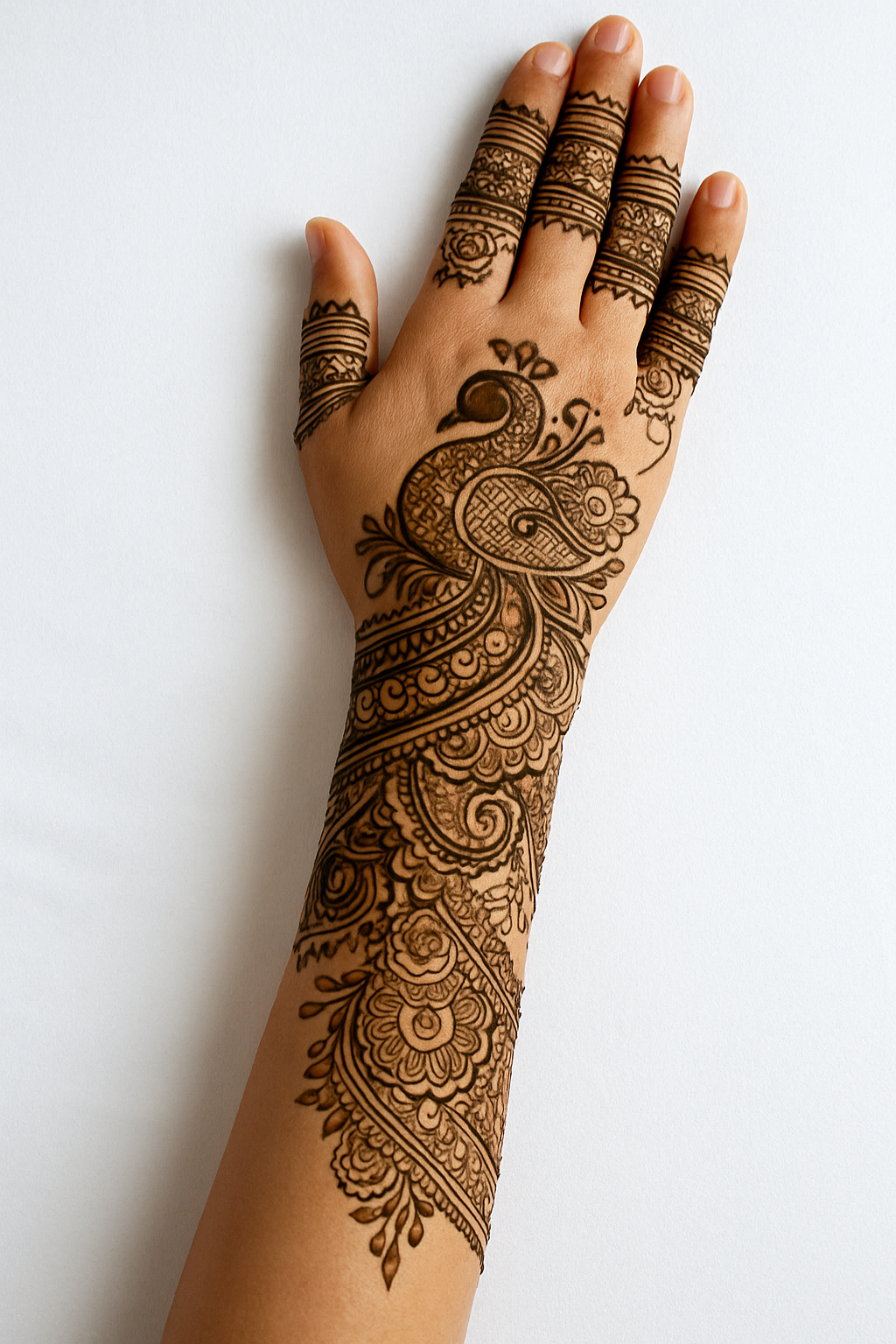
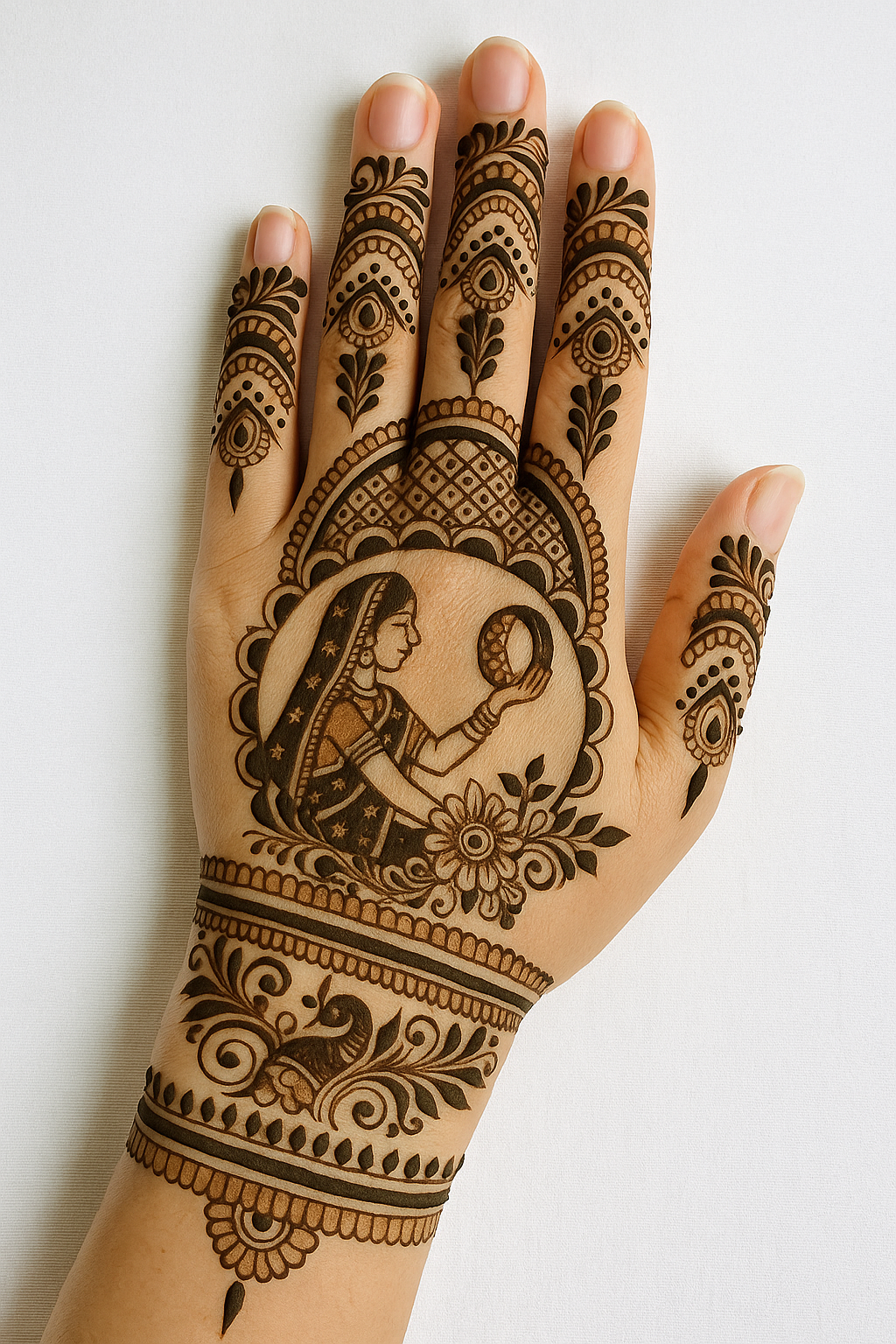
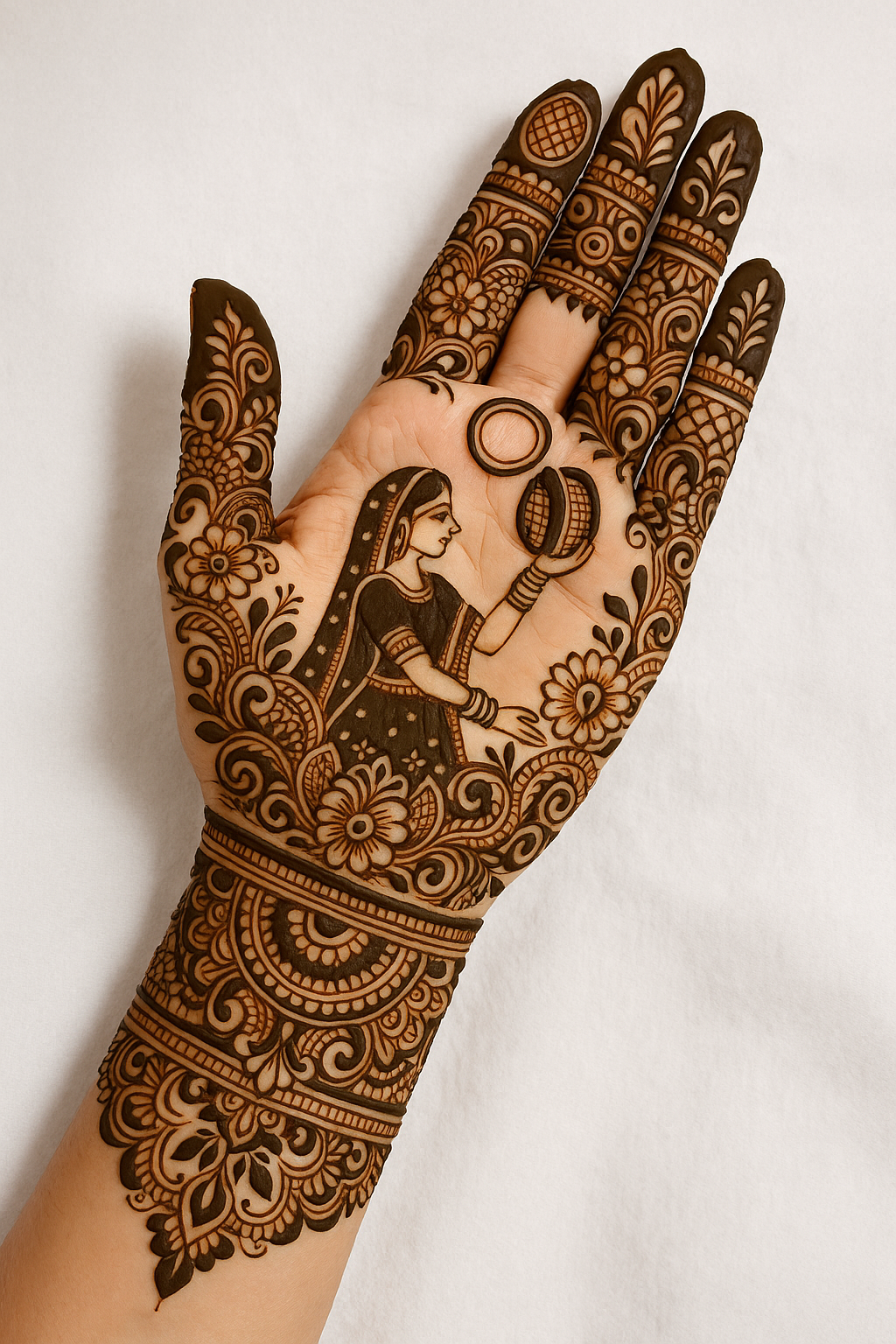
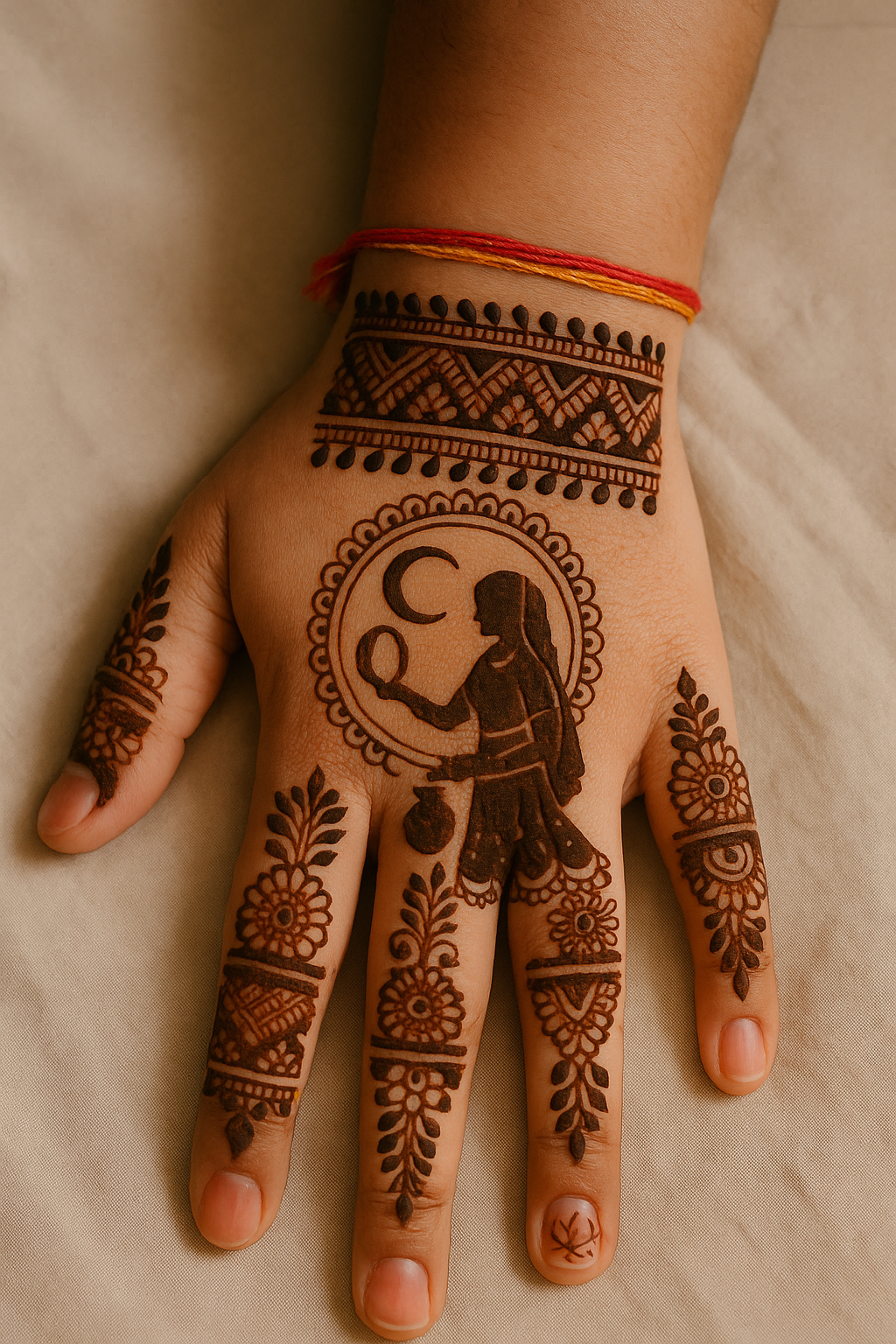
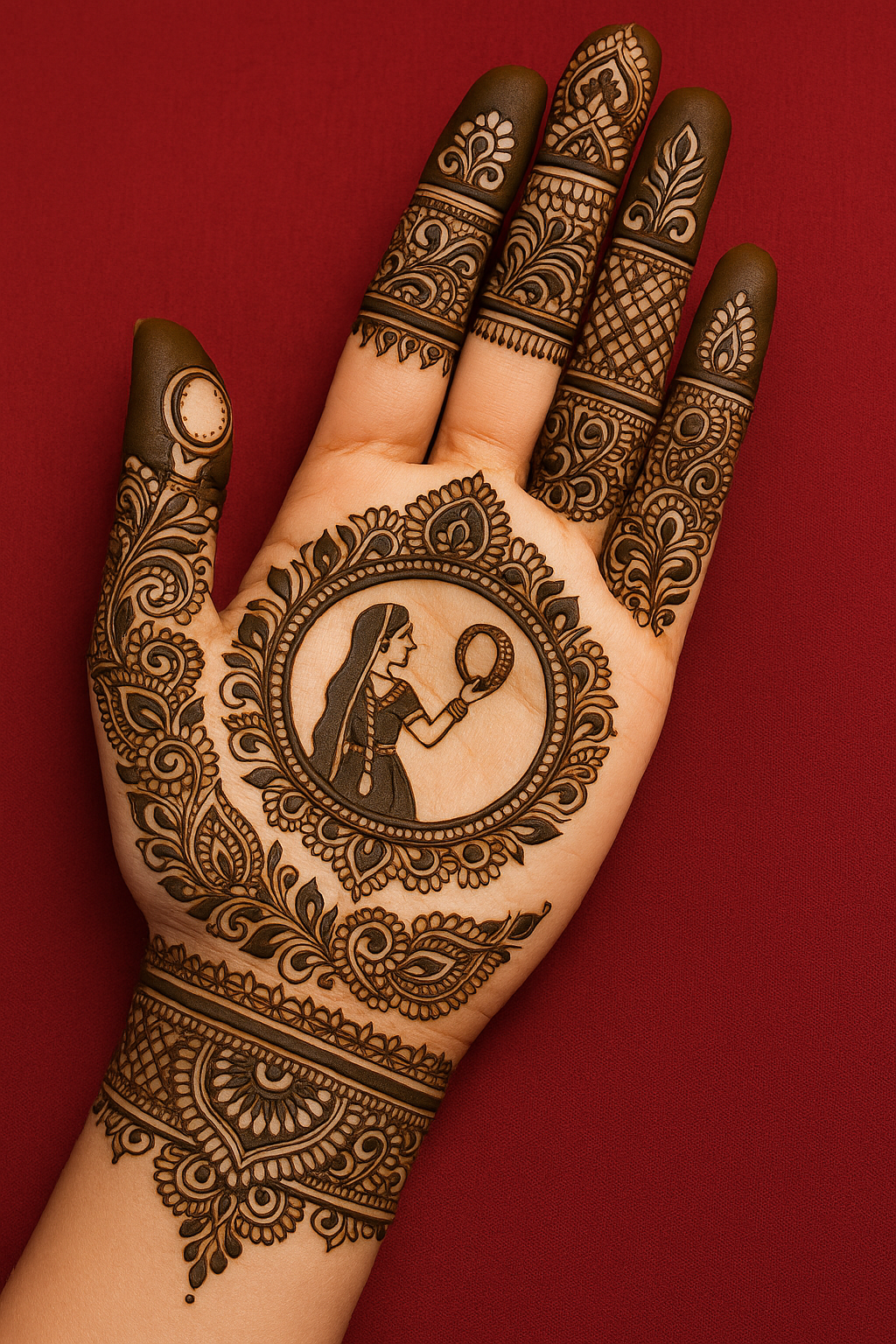
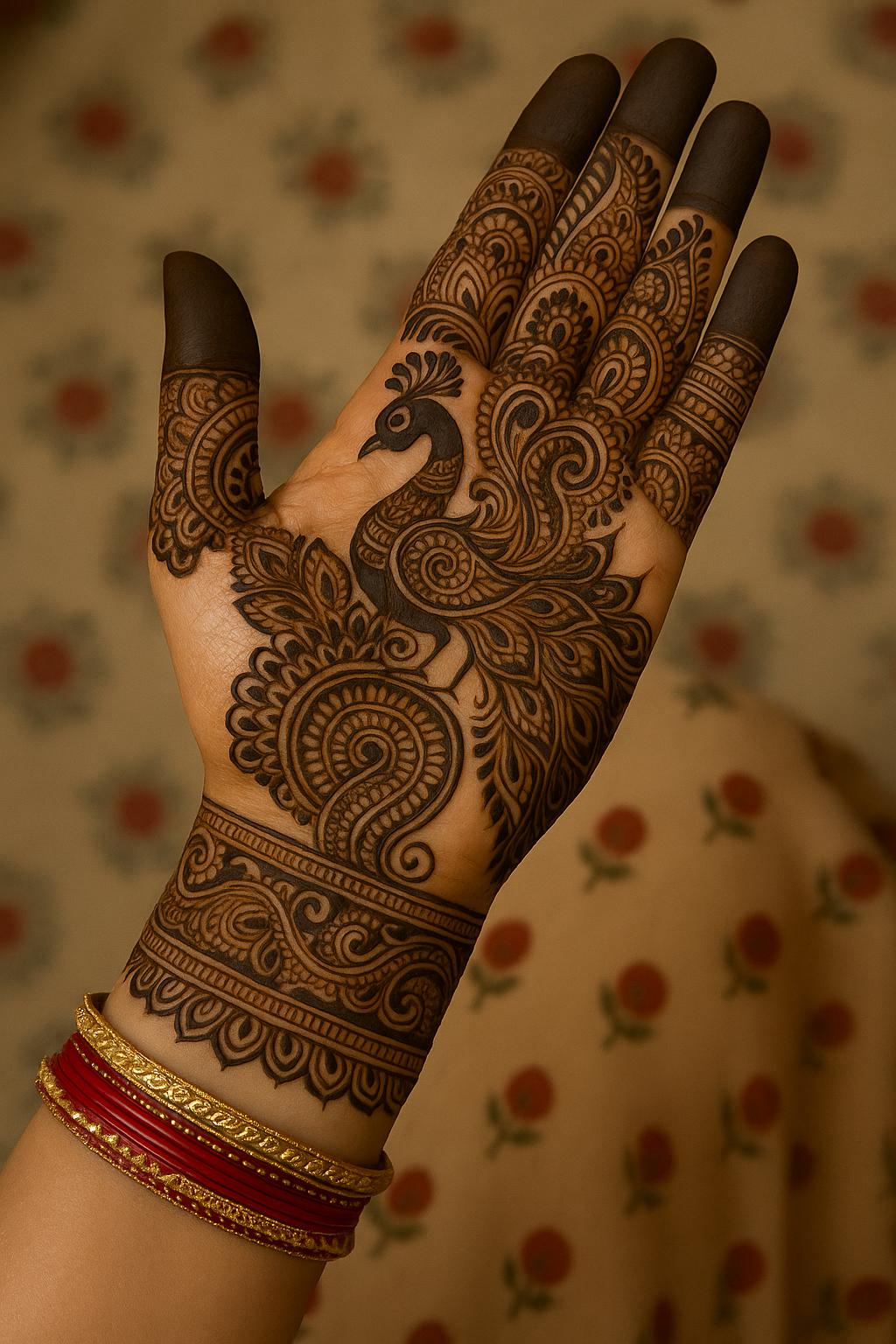
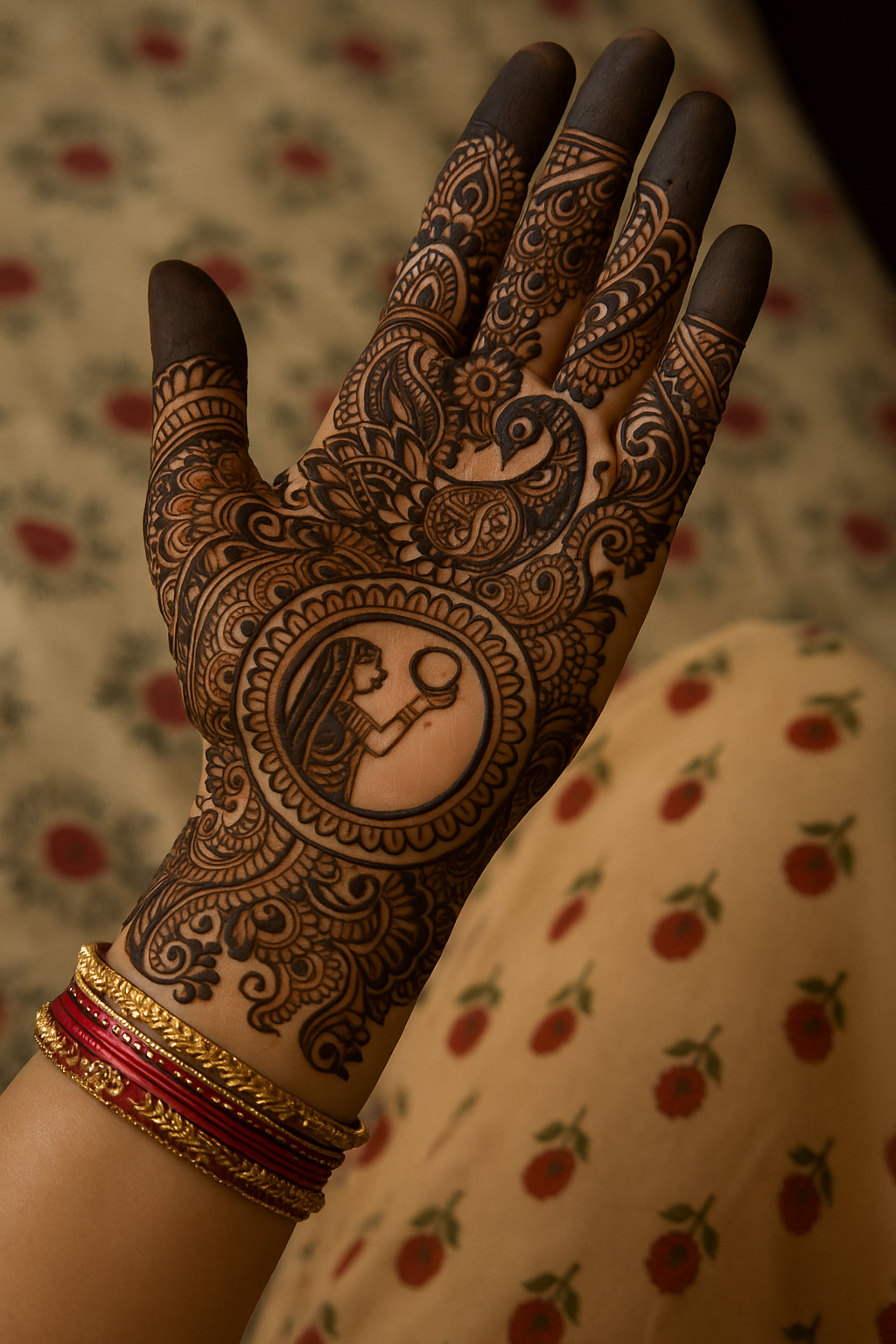
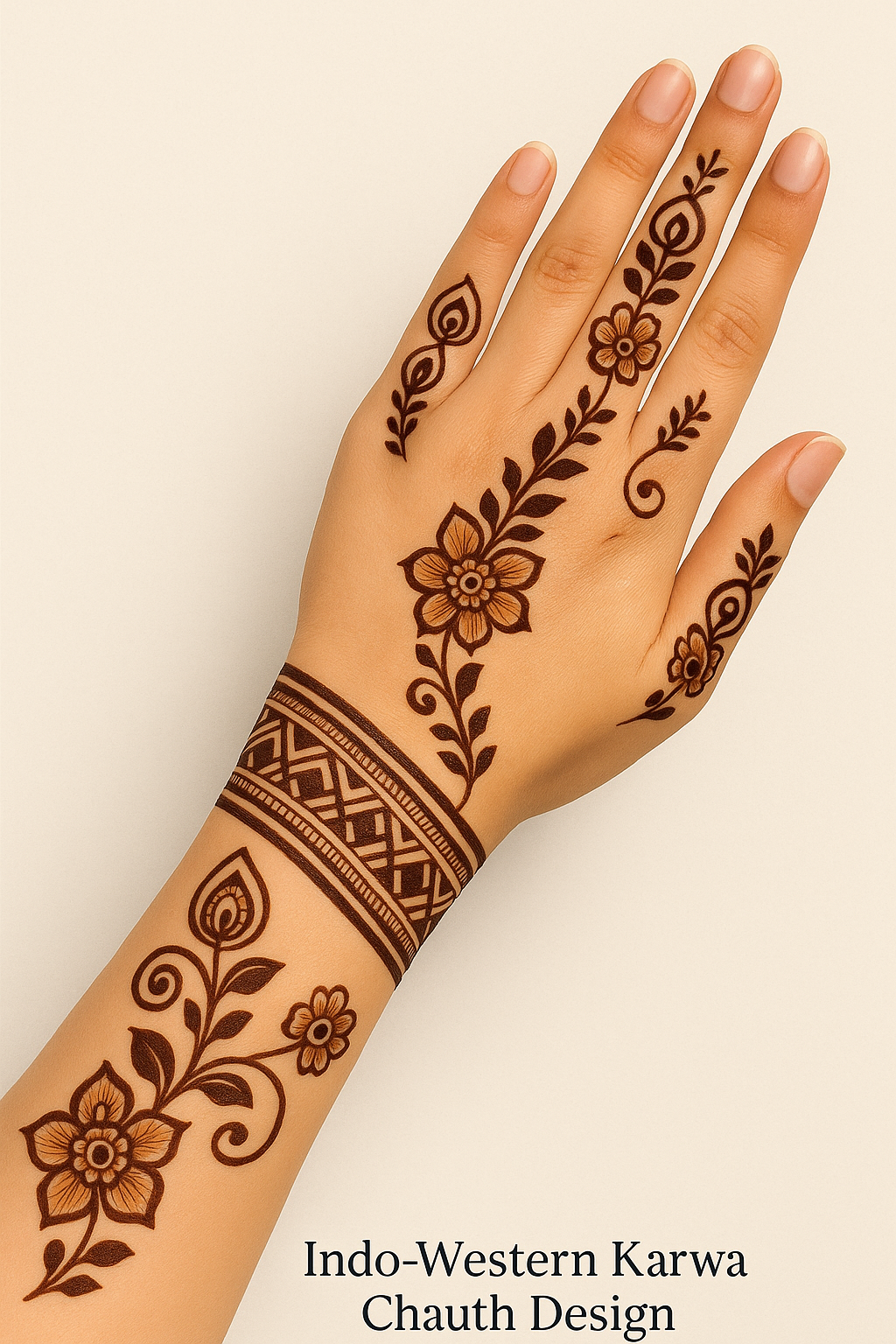
Table of Contents
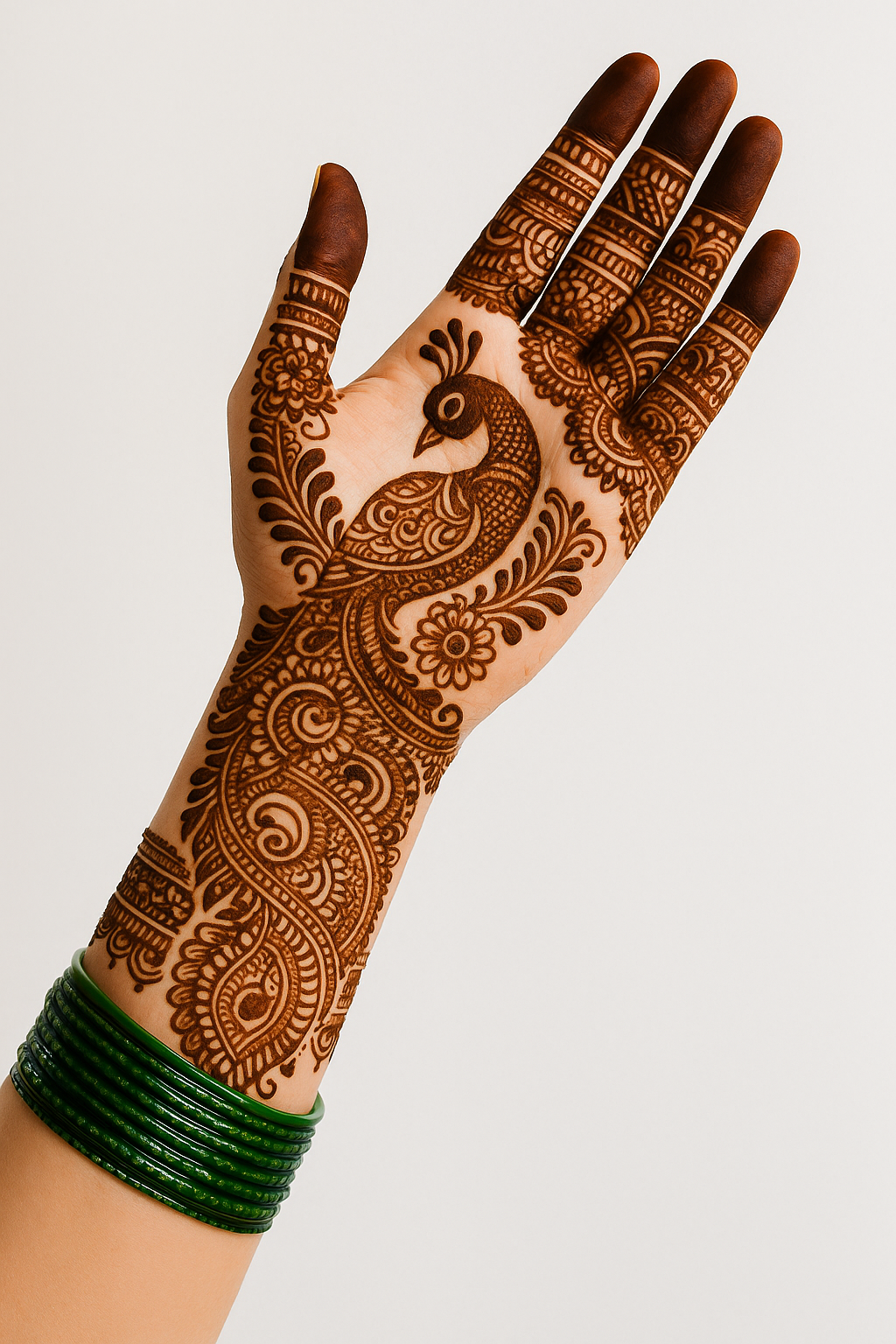
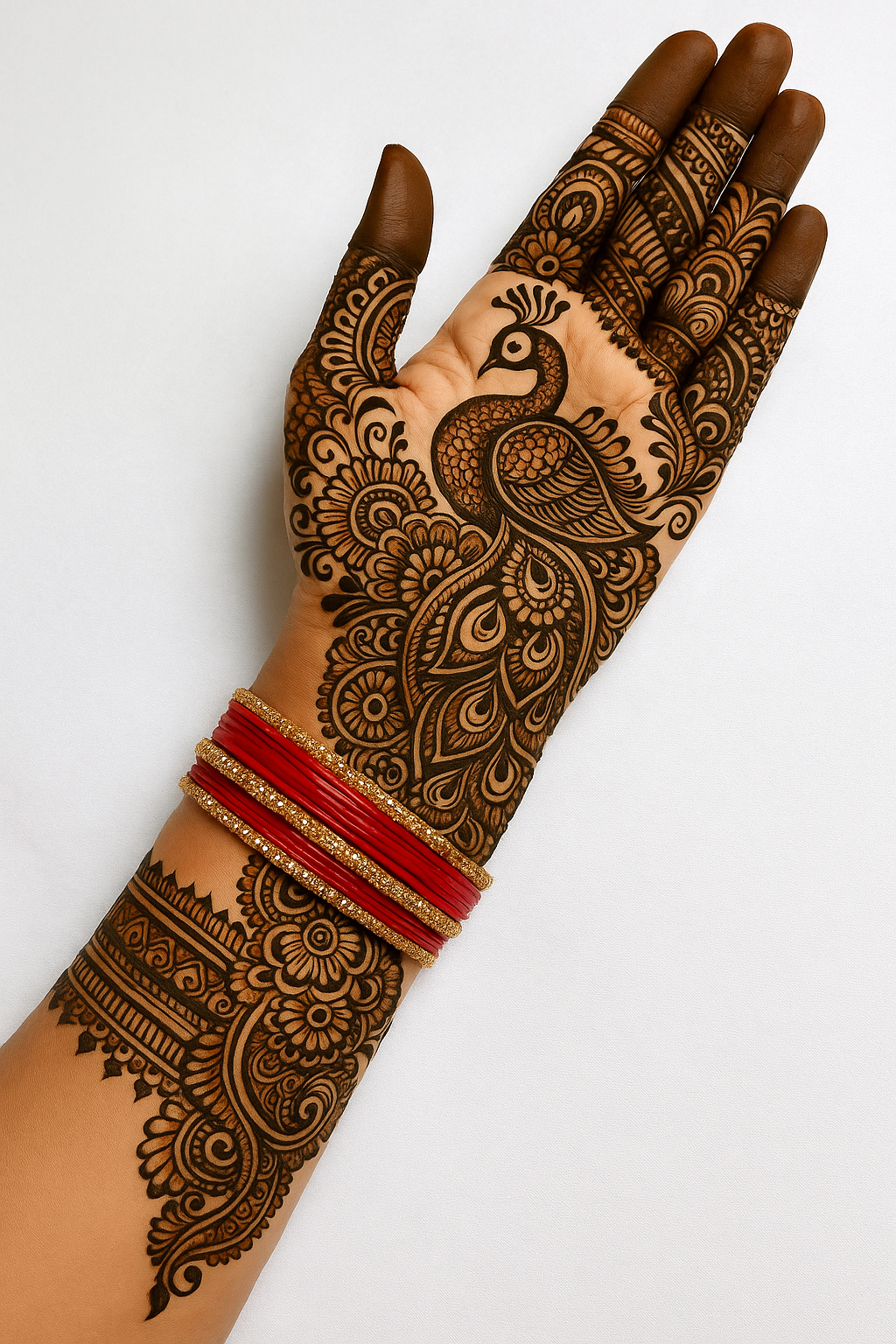
Karwa Chauth, one of the most cherished festivals for married Hindu women, is a beautiful blend of devotion, tradition, and love. As the moon rises and women gaze at it through their chhanni (sieve) after a day-long fast, their hands adorned with intricate mehndi become a symbol of beauty and faith.
Among all the rituals, applying mehndi is the most awaited part of the celebration. It’s not just a tradition; it’s an art form that connects generations of women through designs that tell stories of love, beauty, and togetherness.
In this blog, we’ll explore the different types of Karwa Chauth Mehndi design 2025 in India, their symbolic patterns, and what makes each style special — from traditional motifs to modern fusion artistry.
The Cultural Significance of Karwa Chauth Mehndi design 2025
Before diving into the designs, it’s important to understand why mehndi holds such importance during Karwa Chauth.
Mehndi, or henna, is believed to bring good fortune, prosperity, and deep love between couples. The darker the mehndi color on a woman’s hands, the stronger the bond between her and her husband—or so the legend goes.
In ancient times, women used mehndi not just for beauty but also as a cooling agent for the body and to symbolize emotional well-being and joy. Over the years, these designs evolved into artistic masterpieces, each pattern carrying meaning and grace.
Types of Karwa Chauth Mehndi Design 2025 in India
India’s diversity is reflected beautifully in its mehndi patterns. From the dense Rajasthani art to the minimal Indo-Western styles, every region offers a unique interpretation of the festival through design. Let’s explore them all:
1. Traditional North Indian Karwa Chauth Mehndi Design 2025
Origin: Uttar Pradesh, Punjab, Haryana
Design Highlights:
- Central motif of a woman viewing the moon through a sieve.
- Karwa (clay pot), moon, sieve, and husband’s image are often depicted.
- Borders filled with paisleys, vines, floral chains, and mandala circles.
- Dense coverage from fingertips to wrist, often extending to arms.
Symbolism:
The design narrates the essence of Karwa Chauth — devotion, marital love, and longevity of the husband’s life.
Best For: Brides and married women who love traditional storytelling through mehndi.
2. Rajasthani Mehndi Design
Origin: Rajasthan & parts of Gujarat
Design Highlights:
- Dulha–Dulhan (bride-groom) motifs as the centerpiece.
- Elephants, peacocks, kalash (sacred pot), and mandala borders.
- Mirror symmetry — both hands have identical patterns.
- Use of jaali (net-like) detailing and filled fingertips for elegance.
Symbolism:
This royal design celebrates love, loyalty, and grandeur, just like Rajasthani culture.
Best For: Brides or women who want a regal and luxurious mehndi look.
3. Arabic Karwa Chauth Mehndi Design 2025
Origin: Middle East (adapted by Indian mehndi artists)
Design Highlights:
- Bold outlines, floral patterns, and shaded leaves.
- Minimal filling; more emphasis on flow and curve.
- Often asymmetrical — only one side of the hand or arm is designed.
Symbolism:
Arabic mehndi focuses on aesthetic beauty and fluidity — making it a perfect blend of elegance and modernity.
Best For: Working women or those who prefer light, quick-to-apply designs.
4. Peacock Style Karwa Chauth Mehndi Design 2025
Origin: Pan-Indian, inspired by bridal art
Design Highlights:
- The peacock, symbol of grace and marital bliss, forms the centerpiece.
- Surrounded by paisleys, lotus flowers, and curved feathers.
- Extends from palm to wrist or even forearm.
- Often paired with mandala cuffs and floral vines.
Symbolism:
The peacock represents beauty, renewal, and devotion, perfectly matching the spirit of Karwa Chauth.
Best For: Women who want an elegant and royal touch to their mehndi.
5. Mandala Style Karwa Chauth Mehndi Design 2025
Origin: Ancient Indian and spiritual traditions
Design Highlights:
- Circular mandalas at the center of the palm.
- Concentric rings, dots, and lotus petals for symmetry.
- Simple yet deeply spiritual and visually stunning.
Symbolism:
Mandala signifies wholeness, eternity, and divine union — aligning with the essence of love and faith in marriage.
Best For: Women who appreciate simplicity with deep meaning.
6. Minimalist & Modern Indo-Western Mehndi Design
Origin: Urban fusion art
Design Highlights:
- Clean, geometric lines and half-hand designs.
- Use of negative space — parts of the skin are intentionally left blank.
- Moon, bracelet, leaf trails, or tiny floral bands on the fingers.
Symbolism:
This design reflects the modern woman’s personality — confident, elegant, and rooted in culture while embracing change.
Best For: Younger women and first-time Karwa Chauth participants.
7. Portrait or Theme-Based Karwa Chauth Mehndi
Trend: Modern artistic style
Design Highlights:
- Personalized depictions — the couple, moon scene, or the chhanni ritual.
- 3D effects with shading.
- Often includes names, initials, or wedding dates.
Symbolism:
Represents the personal bond and memories between couples — turning mehndi into storytelling art.
Best For: Newlyweds or brides celebrating their first Karwa Chauth.
8. Gujarati and Bengali Mehndi Designs
Origin: Western and Eastern India
Design Highlights:
- Gujarati patterns feature checkered nets, lotus, and diamond-shaped outlines.
- Bengali mehndi includes shankha (conch), fish motifs, and red accents.
Symbolism:
Each motif represents auspiciousness and prosperity — rooted in local traditions.
Best For: Women celebrating with regional customs and heritage.
9. Full-Hand Bridal Karwa Chauth Mehndi Design
Origin: Bridal culture across India
Design Highlights:
- Both hands and arms fully covered.
- Combines multiple motifs — moon, peacock, mandala, sieve, kalash, diya.
- Dense coverage with hidden initials or love symbols.
Symbolism:
This design is a visual dedication of love, purity, and eternal connection between the couple.
Best For: Brides or married women celebrating their first Karwa Chauth.
10. Mandala-Paisley Fusion Karwa Chauth Design
Modern Twist: Artistic blend of traditional forms
Design Highlights:
- Central mandala encircled with paisleys and floral vines.
- Balanced symmetry — perfect for both hands.
- Ideal for those who prefer structured yet detailed patterns.
Symbolism:
Represents harmony and beauty, blending old traditions with modern aesthetics.
Popular Pattern Details in Karwa Chauth Mehndi
Here are the most recurring motifs and patterns you’ll find across all styles:
| Pattern | Meaning | Where It’s Used |
|---|---|---|
| Peacock | Beauty, prosperity | Center of hand or arm |
| Mandala | Wholeness, eternity | Palm or backhand |
| Paisley | Growth, fertility | Borders and cuffs |
| Kalash | Purity, prayer | Wrist and arm area |
| Moon | Husband’s longevity | Palm or top of hand |
| Floral Vines | Joy, beauty | Fingers and side designs |
| Bride-Groom Motif | Union | Center of palms |
| Jaali Work | Intricacy, richness | Background filler |
Tips to Make Your Karwa Chauth Mehndi Last Longer
- Avoid water for at least 6–8 hours after application.
- Use a lemon-sugar mixture to darken the color.
- Warm your hands slightly over clove smoke for a deeper stain.
- Avoid soap or detergent for the first 24 hours.
- Moisturize daily with coconut or mustard oil.
Final Thoughts
Karwa Chauth mehndi is more than just a design — it’s a celebration of love, art, and tradition passed down through centuries. Whether you choose a dense Rajasthani bridal design, a simple Arabic pattern, or a modern Indo-Western look, every swirl and dot carries the same emotion — devotion and grace.
So this Karwa Chauth, let your mehndi tell your story — bold, beautiful, and full of love.
